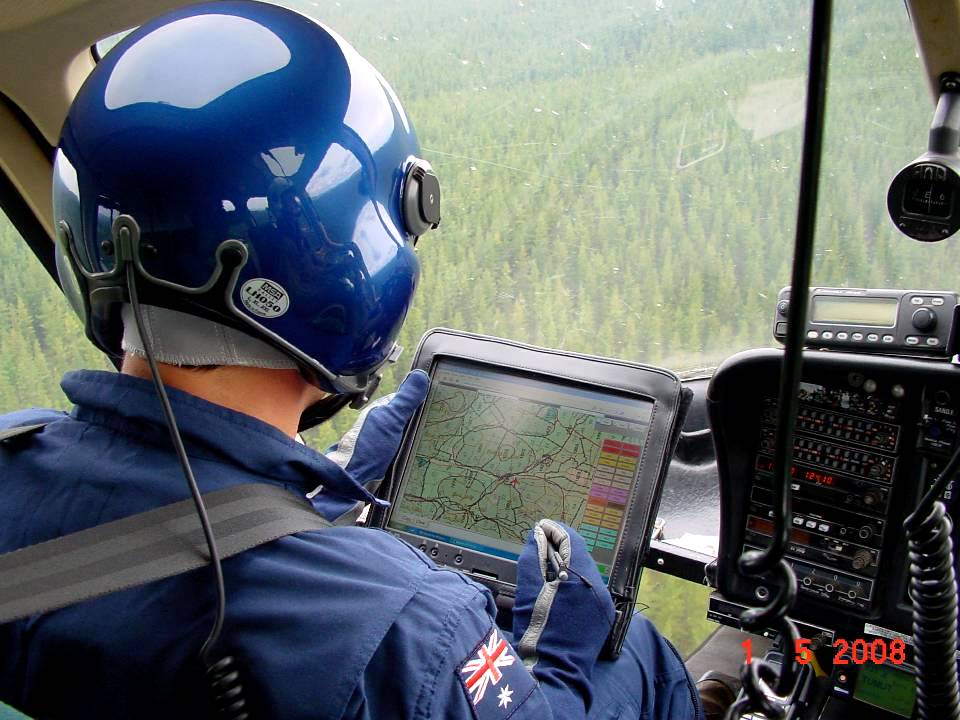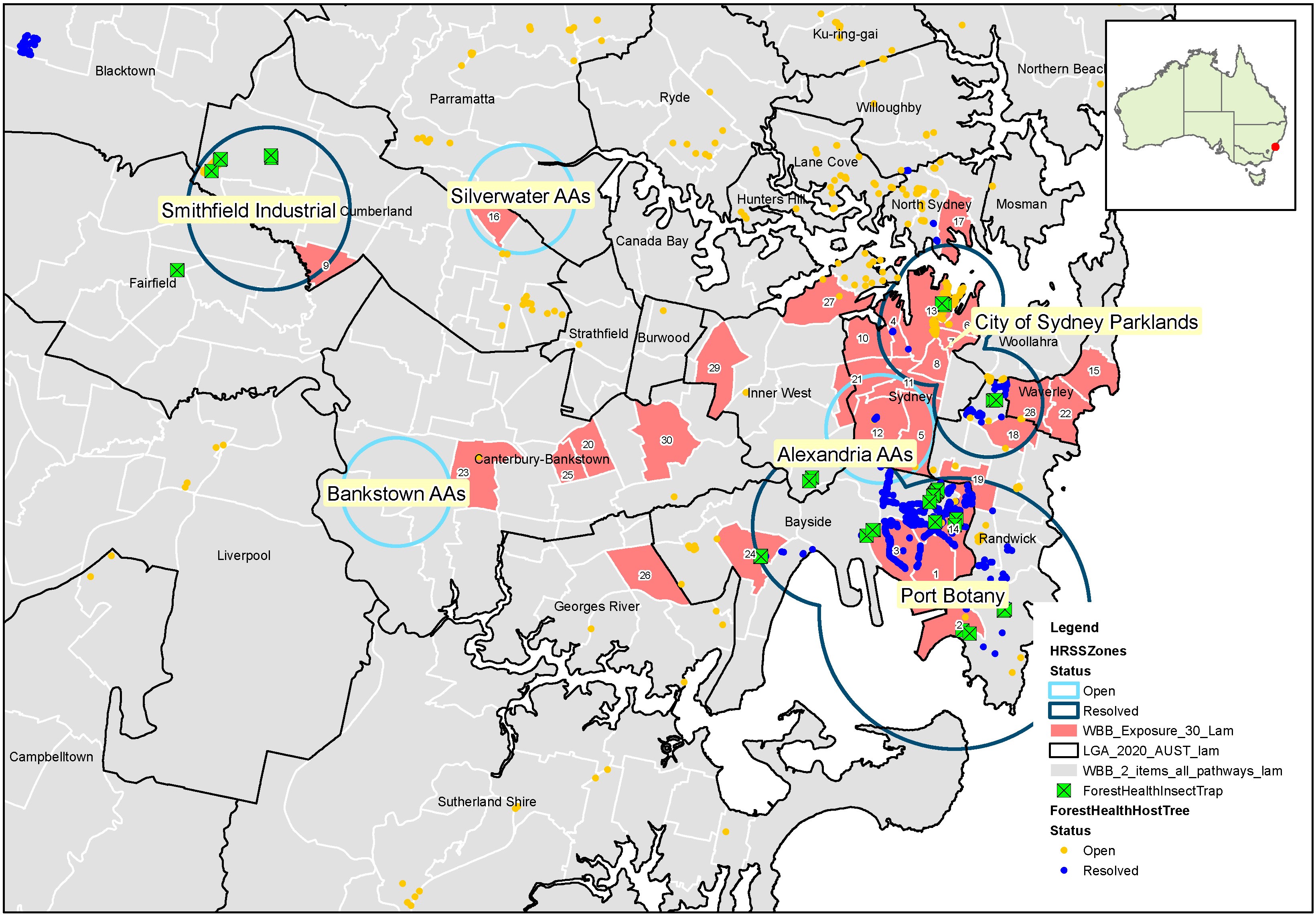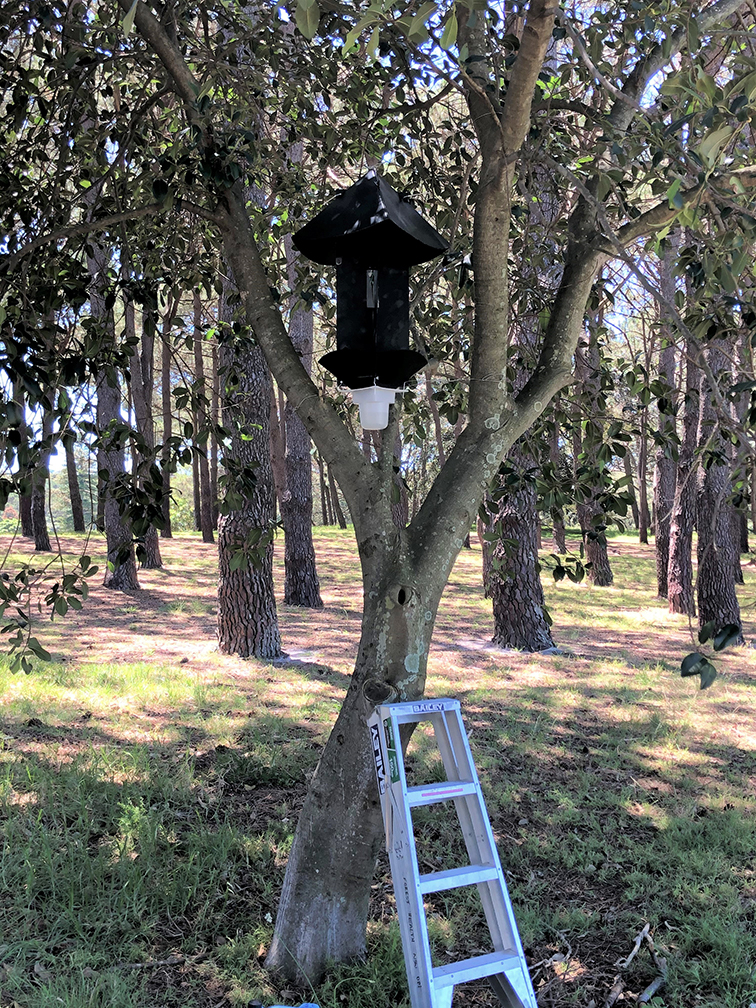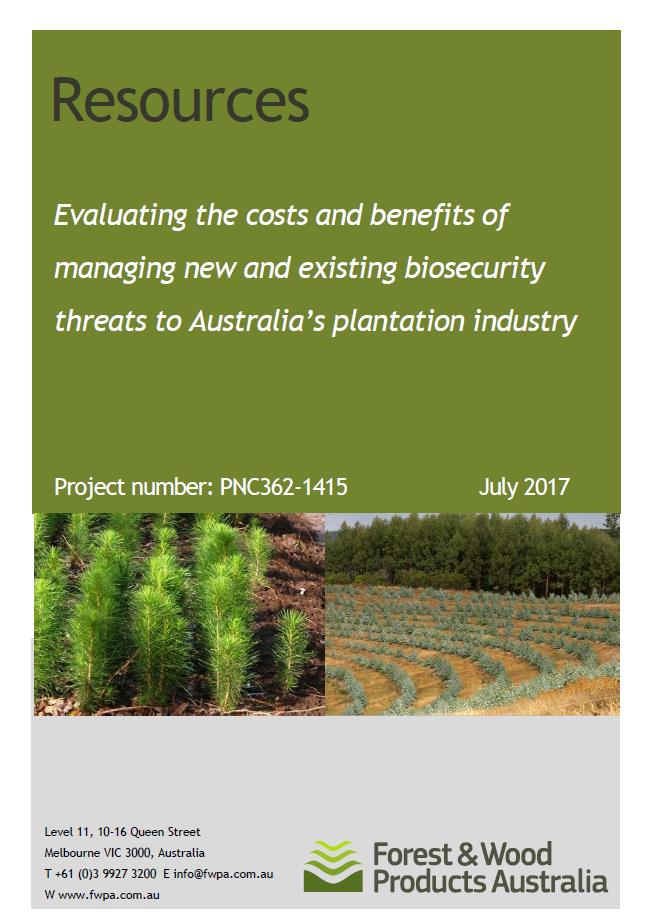
Forest Health

Forest Health & Biosecurity
DPIRD's Forest Health team conducts forest health surveillance of planted and native forests. Other key activities include:
- biosecurity surveillance for early detection of exotic forest pests;
- research and development improving surveillance technologies;
- pest and disease management strategies; and
- quantifying the impact of invasive pests.
We work closely with the forest industry and State and Federal governments, and have a close working relationship with DPIRD Biosecurity and Food Safety.
Forest health
 The Forest Health team conduct annual forest health surveillance of NSW's softwood and hardwood plantation estate for Forestry Corporation of NSW. This includes aerial and ground surveys mapping the extent and severity of damage from a range of influences including: insect pests, fungal diseases, invertebrate pests, weeds, nutritional imbalances and climatic disorders.
The Forest Health team conduct annual forest health surveillance of NSW's softwood and hardwood plantation estate for Forestry Corporation of NSW. This includes aerial and ground surveys mapping the extent and severity of damage from a range of influences including: insect pests, fungal diseases, invertebrate pests, weeds, nutritional imbalances and climatic disorders.
We then work with forest managers to develop and coordinate management strategies for key pests, such as biocontrol for Sirex wood wasp and the Monterey pine aphid, or fungicide control of Dothistroma needle blight. Our surveillance program assists in the ecologically sustainable management of the plantation estate. For more information see the Forestry Corporation Sustainability Report.
Forest biosecurity
Since 2014, the Forest Health team has been conducting forest biosecurity surveillance for early detection of exotic pests and diseases that can threaten our plantations, amenity trees and native forests. This involves establishing insect traps to capture new arrivals and conducting surveillance of host-trees for symptoms of exotic pest and disease attack. Together these activities are called high risk site surveillance, because they are conducted in areas of highest risk of exotic pest entry and establishment, such as around seaports and airports.


We also undertake stakeholder engagement to improve early detection and reporting of exotic pests (see Protect what we love). Research conducted by Forest Health has shown that the public detect many new exotic pest arrivals, and mostly in urban areas on amenity trees. The Forest Health team conduct training workshops providing information about "what to look out for" (signs and symptoms) and "how to report" it (Exotic Pest Hotline) with a range of stakeholders, including local councils, arborists, golf courses and botanic gardens. We have developed a range of fact sheets (see Protect what we love) to assist in early detection of invading exotic pests of trees.
This program is able to be carried out due to support from Forestry Corporation of NSW.
Forest Health are working with Plant Health Australia, the federal and state governments, and other technical experts to develop a National Forest Pest Surveillance Program as part of the National Forest Biosecurity Surveillance Strategy.
Current and Recent Projects
Remote sensing of urban trees to improve early detection and eradication of invasive forest pests
Trees form a major component of urban green spaces, and can also provide a gateway for exotic pests and diseases to establish and spread. Knowing where all the trees are can assist in high risk site surveillance (see Forest Biosecurity section above), but also expedite a response to the detection of a newly arrived invasive pest or disease. Currently, there are very few publicly available spatial databases of urban street and park trees in Sydney, so biosecurity agencies need to conduct ground surveys to map individual tree species. Advances in remote sensing technologies and machine learning provide an opportunity for semi-automation of trees species mapping.
Evaluating the costs and benefits of managing new and existing biosecurity threats to Australia's plantation industry
This work was commissioned by the forest industry through Forest and Wood Products Australia to evaluate the costs and benefits of managing new and existing biosecurity threats to Australia's plantation industry. It also includes a review of forest health and biosecurity surveillance in Australia and identifies gaps and needs to improve forest biosecurity into the future. See link below to the report, or Angus Carnegie's publications for individual papers.
Exotic pest arrivals, responses, impact, and interceptions: using historical data to improve forest biosecurity into the future
This work includes the culmination of many years collating data on the exotic pests that have established in Australia (more than 260 of them), how we responded to their detection, how they impacted our forests (plantations, amenity trees and native forests), and what we learnt from pests intercepted at the border and how we can use that to improve forest biosecurity into the future.
- Narhung HF, Carnegie AJ (2021) Border interceptions of forest insects established in Australia: intercepted invaders travel early and often. NeoBiota 64:69-86.
- Nahrung HF, Carnegie AJ. (2020) Non-native forest insects and pathogens in Australia: establishment, spread and impact. Frontiers in Global Change 3(37) doi: 10.3389/ffgc.2020.00037
- Carnegie AJ, Nahrung H (2019) Post-border forest biosecurity in Australia: response to recent exotic detections, current surveillance and ongoing needs. Forests 10:336
![Exotic forest pests that have established in Australia [H. Nahrung, University of the Sunshine Coast] Exotic forest pests that have established in Australia [H. Nahrung, University of the Sunshine Coast]](https://www.dpi.nsw.gov.au/__data/assets/image/0006/1329882/Exotic-forest-pests-that-have-established-in-Australia.png)
Publications
For publications and reports look at Angus Carnegie's Science and research staff profile
Contact Details
Angus Carnegie | Leader & Senior Principal Research Scientist
angus.carnegie@dpi.nsw.gov.au
Conrad Trollip | Research Officer
conrad.trollip@dpi.nsw.gov.au
Matthew Nagel | Research Officer (GIS)
matthew.nagel@dpi.nsw.gov.au
David Sargeant | Technical Officer
david.sargeant@dpi.nsw.gov.au


